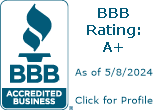The Benefits of Attic Insulation
After the mortgage, the biggest expense homeowners face is heating and cooling their home. In most cases, homeowners will find it a worthwhile investment to upgrade the insulation in their home.
There are two primary ways extra insulation can be applied. The first is over the exterior sheathing on the outside of the home. This is only viable if the siding is being replaced; at all other times it is cost ineffective.
The second best place to insulate is the attic. Attics can be under-insulated because simply insulating them up to code standards is not always best practice. In this case, it’s better to go beyond code. Unless your attic insulation has an R-value of greater than R-30 (11 inches of fiberglass or rock wool or 8 inches of cellulose), you could probably benefit by adding more.
The Benefits of Attic Insulation
New insulation can be added either between the ceiling joists (the floor of the attic) or between the rafters (the ceiling of the attic), whichever is easiest to access. There are multiple types of insulation: rolls and batts, loose fill, or expanding foam. There are two types of expanding foam, and if you are looking at choosing this option, it’s important to know the difference. Open-cell foam is porous and similar to fiberglass batting in its R-value. Closed-cell foam is extremely efficient, and requires only 3-4 inches to achieve R-30. Closed-cell insulation is the most expensive option, but it’s extremely durable and efficient and will insulate the space the best of all insulations options.











